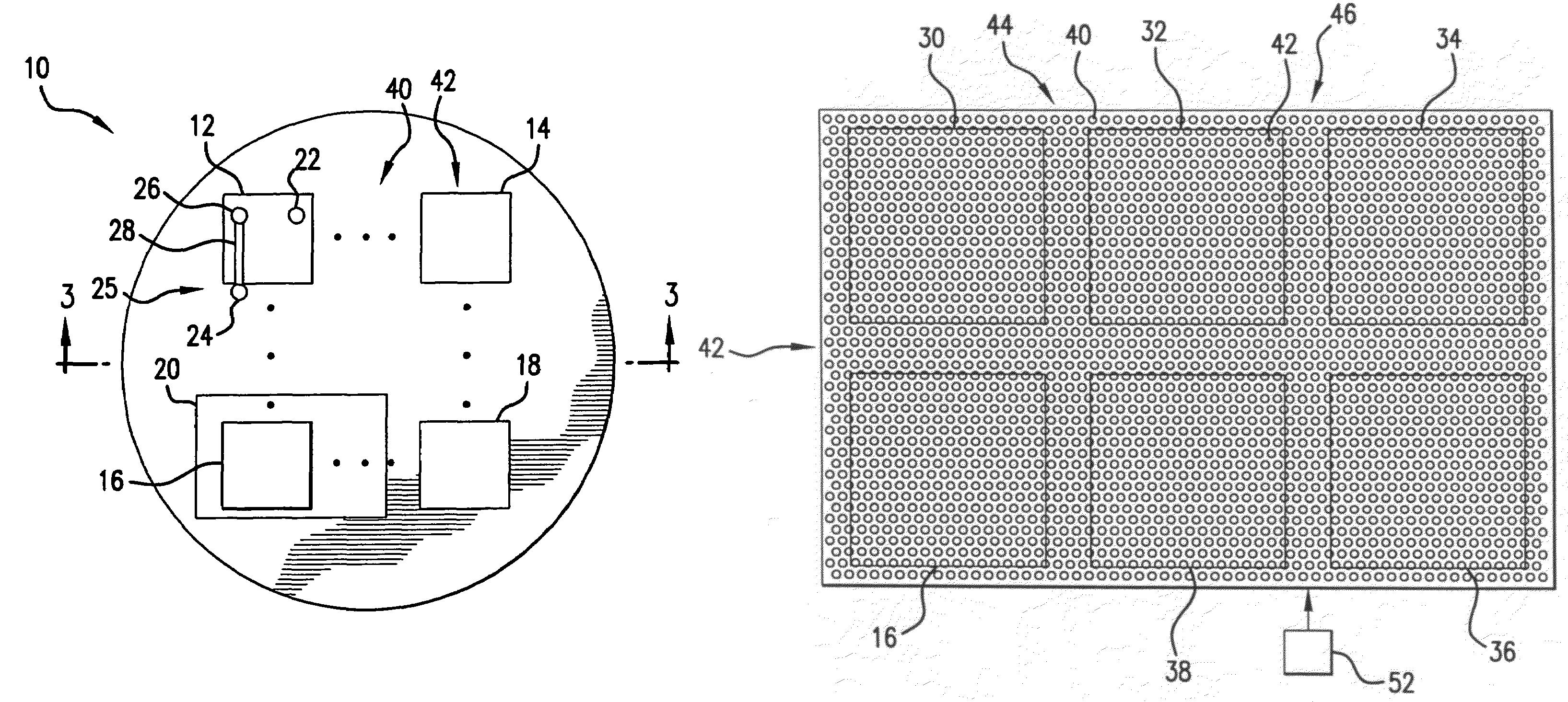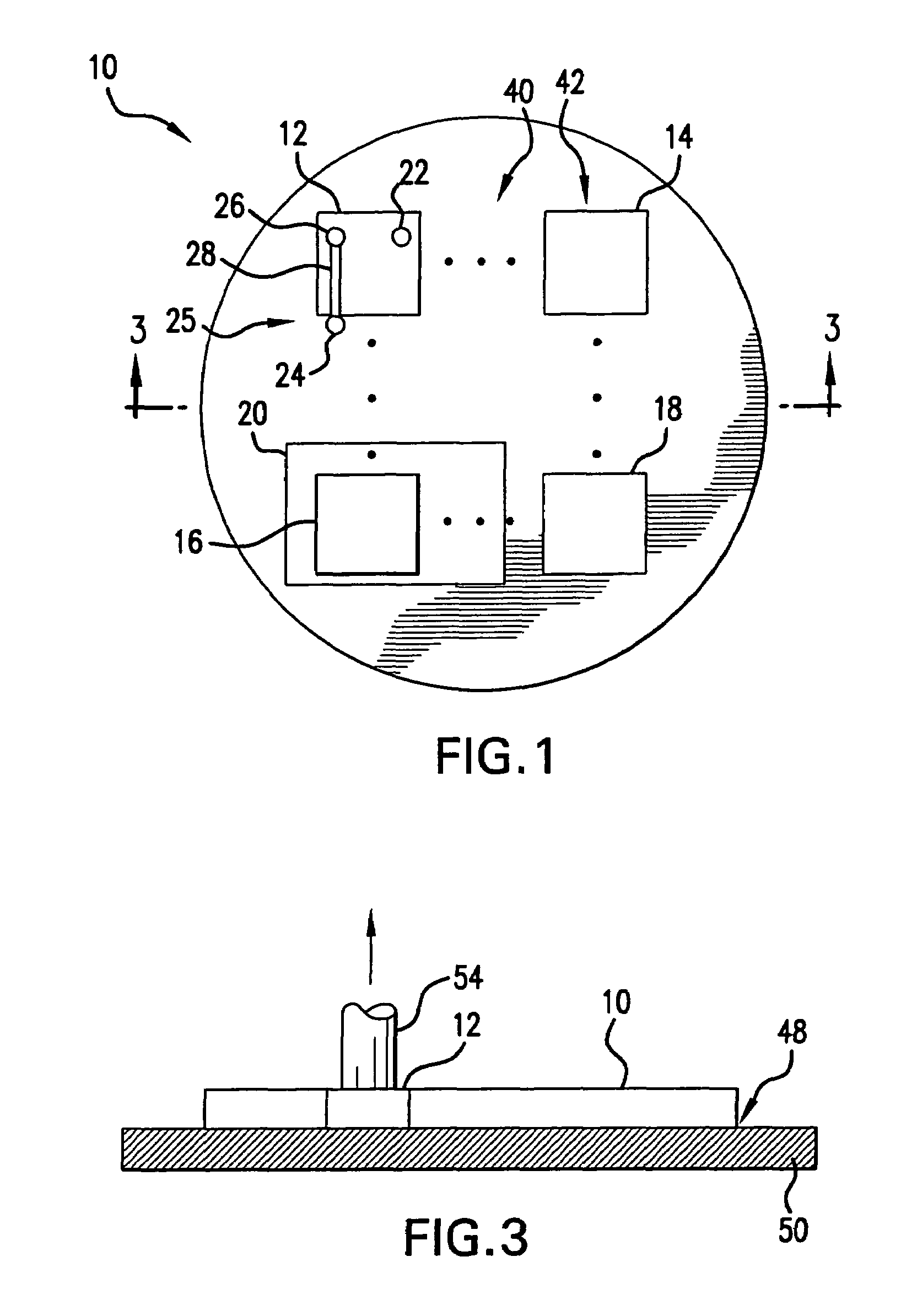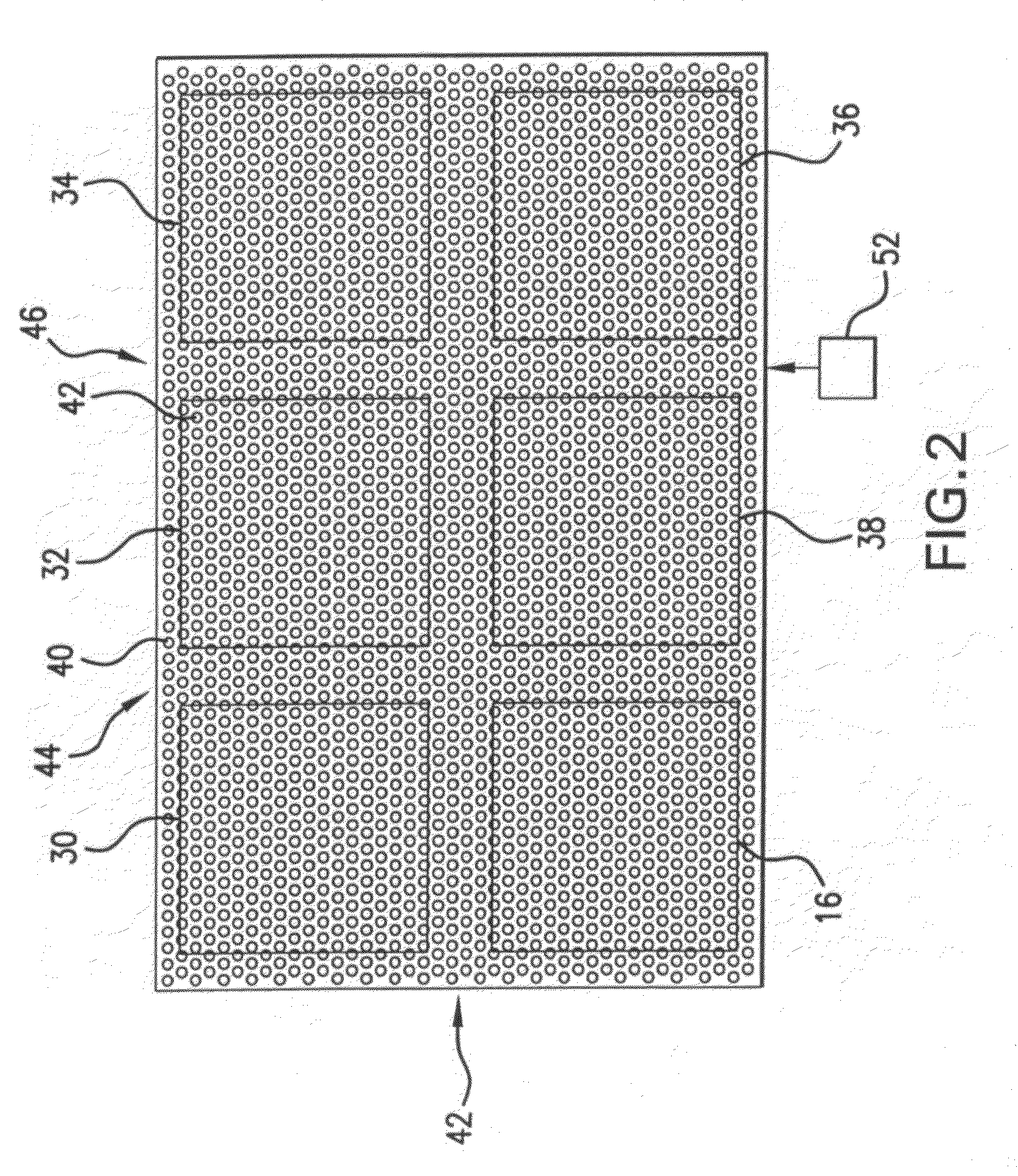Deposition pattern for eliminating backside metal peeling during die separation in semiconductor device fabrication
a technology of die separation and die separation pattern, which is applied in the direction of semiconductor devices, semiconductor/solid-state device details, electrical equipment, etc., can solve the problems of bm layer often damaged (, torn, delaminated, etc., and bm layer to tear across the break lin
- Summary
- Abstract
- Description
- Claims
- Application Information
AI Technical Summary
Benefits of technology
Problems solved by technology
Method used
Image
Examples
Embodiment Construction
[0020]FIG. 1 is a bottom view of a fabricated wafer 10 under illustrated embodiments of the invention. A fabricated wafer is a wafer upon which a number of integrated circuits have been constructed by conventional techniques (except as noted below) and which wafer needs to be separated into one or more die in order to serve its intended function.
[0021]Under illustrated embodiments, the wafer 10 may be fabricated with a group of metal deposits (dots) 40, 42 on a backside of the wafer 10. The backside of the wafer is the side of the wafer that would be attached to the adhesive of a saw frame during a separation process.
[0022]The group of metal dots may be disposed adjacent to and around any metal structure disposed on the backside of the wafer 10. The presence of the metal dots has been found to retard the occurrence of burrs on backside metal structures especially adjacent a saw kerf. FIG. 5 is a flow chart that depicts process steps that may be used in conjunction with the metal dot...
PUM
 Login to View More
Login to View More Abstract
Description
Claims
Application Information
 Login to View More
Login to View More - R&D
- Intellectual Property
- Life Sciences
- Materials
- Tech Scout
- Unparalleled Data Quality
- Higher Quality Content
- 60% Fewer Hallucinations
Browse by: Latest US Patents, China's latest patents, Technical Efficacy Thesaurus, Application Domain, Technology Topic, Popular Technical Reports.
© 2025 PatSnap. All rights reserved.Legal|Privacy policy|Modern Slavery Act Transparency Statement|Sitemap|About US| Contact US: help@patsnap.com



